Realizing Children’s Rights in Sudan
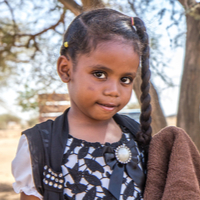
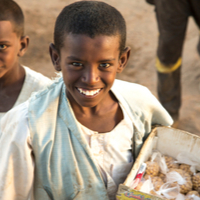
Sudan’s history has been marked with conflict, war, and poverty, and as a result, children’s rights are heavily jeopardized. Sudanese children do not grow up with proper access to education, health care or nutrition. Despite certain improvements, Sudan remains a dangerous country for its children, out of which 2.6 million are in need of humanitarian assistance.

Children’s Rights Index: 5,04 / 10
Black level: Very serious situation
Population: 42.8 million
Pop. ages 0-14: 40.16%
Life expectancy: 65.31 years
Under-5 mortality rate: 58.4‰
Sudan at a glance
Sudan is located in Northeast Africa. It is the third-largest African country, and receives a high number of refugees from countries such as Ethiopia, Eritrea, Chad, Central African Republic and South Sudan (1 million refugees, 2 million internally displaced people). (Sikainga, 2021) These migration patterns trigger political instability within the country, among other issues of conflict, climate change, and poverty, conditions which particularly affect the children. The evaluation of children’s rights in Sudan is crucial and urgent, as more than 60% of the population is under 25 years of age. Overall, 64 % of children below 14 experience forms of violence. (UNICEF Sudan, 2021, “Child Protection”)
In January 1956, Sudan was granted independence from Egyptian and British forces, after Egypt’s first President Muhammad Naguib prioritized Sudanese independence within his revolutionary government (Sikainga, 2021). Post-independence, Sudan was often ruled by unstable governments, marked by violence, dictatorship, and terrorism (Al-Shahi 2021).
Under the rule of President Jaadar Nimery, Sudan began Islamist rule, which created tensions between the Islamic north and the Christian and Animist south, resulting in the independence of South Sudan in 2011. (Sikainga, 2021) Islam was the state religion of Sudan from 1983 until 2020, when Sudan became a secular state. (Sikainga, 2021) In Sudan, children, particularly boys, are often involved in armed conflict. (UNICEF Sudan, 2021, “Child Protection”)
Status of children’s rights[1]
Sudan was among the first countries to sign and ratify the Convention on the Rights of the Child (CRC) in 1990, which prompted the establishment of the ‘justice for children’ in order to serve justice for children victims. (Cuninghame et al. 2016) In the following decade, Sudan also signed important international treaties such as the Optional Protocol on the involvement of children in armed conflict in 2000 and the Optional Protocol on the sale of children, child prostitution and child pornography in 2004, and the African Charter on the Rights and Welfare of the Child in 2008. (Cuninghame et al. 2016)
Sudan had reservations with three of the articles of the latter charter regarding the privacy of children, the access of education for pregnant girls, and child marriage, but these were lifted in November 2020. (UNICEF Sudan, 2020, “Gender”) In 2021, Sudan reaffirmed its goals to protect children’s rights, and their access to education, health, and protection in order to reach their full potential within society.
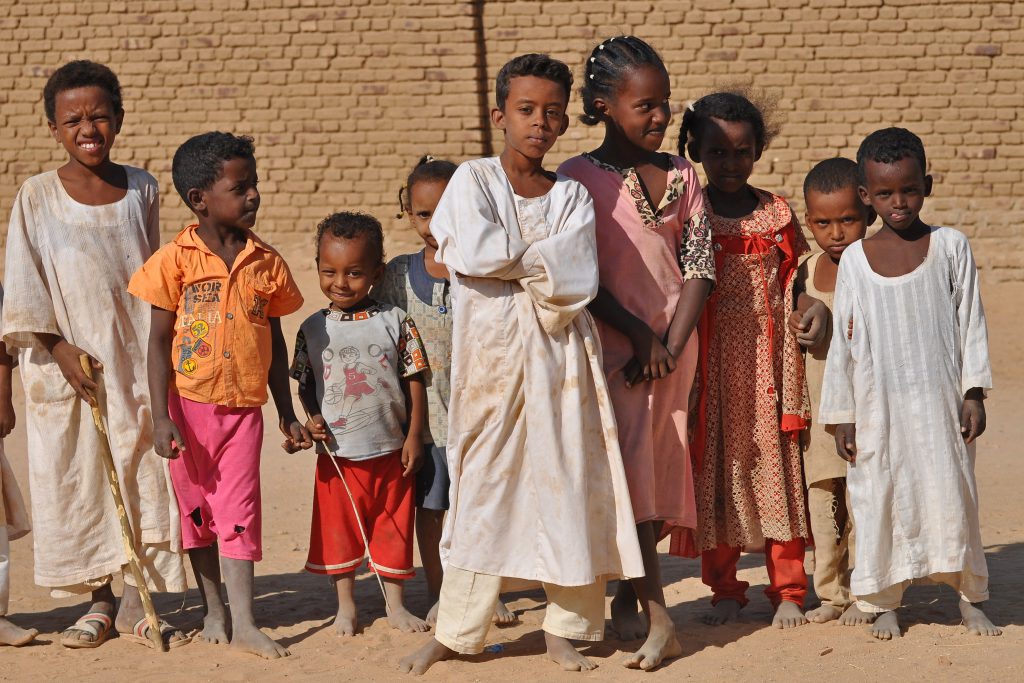
In 2005, Sudan signed the Comprehensive Peace Agreement which proved to be a turning point in Sudanese history, as it allowed and pushed for civil society organizations to focus more on children’s rights. (al-Nagar, and Tønnesen, 2011) Furthermore, the Child Act of 2010 (building on Child Act of 2004) along with the 1991 Criminal Law, guarantee children’s right to life, to express themselves and participate in matters of concern according to their age. This act mentions specifically the care of children in need of special care, and it promises legal representations for children who are victims, defendants or witnesses.
Additionally, the act prohibits the kidnapping of children for prostitution and forced labour, but does not outline other forms of child abduction. (Cuninghame et al. 2016) The act bans corporal punishment in schools, allowing it in the home. Nonetheless, in 2020, Sudan witnessed governmental intervention for the betterment of the health of women and children, with the criminalization of female genital mutilation/cutting (FGM/C), the establishment of the definition of the child across laws, and the prohibition of corporal punishments. (UNICEF Sudan, 2021, “Child Protection”)
For the future, the government has planned a National Strategy and Action Plan for Ending Child Marriage 2020-2030, approved by the Minister of Labour and Social Development. (UNICEF Sudan, 2020, “Gender”) Although the ratification of these treatises and the planning of future strategies indicate progress for children, the rights of Sudanese children are still heavily disrespected.
Addressing the needs of children
Right to education
Within the Middle East/North Africa area, Sudan holds the largest number of out-of-school children. Currently, in Sudan, more than 3.6 million children, or one-third of the school-aged population, do not go to school. There are disparities among this figure: girls, children affected by conflict, refugees, internally displaced persons (IDPs), children in rural areas, and children from poor households are most vulnerable to the lack of schooling.
The literacy rate is particularly low: 45.2 percent of girls and women aged 15-24 are unable to read or write. Additionally, COVID-19 has reduced possible opportunities for schooling: “only 30,577 previously out-of-school children (47 per cent of which were girls), including emergency-affected children and refugees, enrolled in schools, alternative learning programme (ALP) centres, and e-learning with UNICEF support, before the schools and other learning opportunities closed in March 2020.” (UNICEF Sudan, 2021, “Education”)
Prior to the COVID-19 outbreak, however, the progress in schools stemmed from gender-responsive learning spaces, provision of learning supplies, ‘come to school’ and community sensitisation campaigns and teacher training. More than 50% of previously out-of-school children were enrolled in alternative learning programme (ALP) centres.
Poor access to schools is also a major issue in Sudan which contributes to low schooling rates. Furthermore, the quality of the education is most often poor, with few available teachers, the infrastructures of the schools are strikingly low-quality, and as such school environments are often unsafe. (Only 45.5% of the schools have access to clean water.) Missing out on school can have very detrimental consequences for the child’s physical and mental health: children are then more likely to suffer from child labor, poor mental health, and sexual violence. (UNICEF Sudan, 2021, “Education”)
Schools in Sudan are also highly susceptible to violent attacks, which disproportionately affect girls. After the secession of South Sudan in 2011, conflict in the Darfur region and Southern Kordofan state erupted throughout the decade. Particularly, in 2013 and 2014, governmental attacks and aerial bombings on schools increased. Furthermore, governments began to use schools as military bases of operation.
As a result, many children and teachers were caught in the crossfire and hurt, injured, and displaced, consequences which have severe impacts on children’s access to education and their health. Indeed, conflict-related insecurities lead many children to give up going to school.
Sexual violence and assault were also reported: women and girls in Darfur spoke out on their assaults going to school. These school attacks decreased in 2017, possibly due to the government’s 2016 ceasefire, and the decision of the United States to lift economic sanctions for Sudan. (Global Coalition to Protect Education from Attack, 2018)
Nonetheless, other types of abuse in schools remain. In 2018, for example, the BBC journalist Fateh Al-Rahman Al-Hamdani conducted a two-year investigation inside 23 of Sudan’s Islamic schools, or khalwas. (Al-Hamdani, 2020, “Sudan khalwas”) The reports were horrific: boys were often beaten and shackled, whipped, and sexually assaulted. The religious men in charge of these schools, sheikhs, were found to violently attack children.
As a result, Sudan began a survey of all khalwas in Sudan (more than 30,000 across). (Al-Hamdani, 2020, “Revealed: chaining, beatings and torture”) In Sudan at the time of the investigation, children were obliged to memorize the Qur’an. But children should be able to practice religion safely, respectfully, and healthily. Unfortunately, with this treatment, children’s rights are severely lacking within schools.
Right to health
The deterioration of the Sudanese pound has led to economic instability in the country, and further health crises, the effects of which have been exacerbated by the onset of the COVID-19 pandemic. Indeed, the pandemic has exposed the deficiencies of the Sudanese health system, particularly with shortages of medicines within the hospitals and primary care clinics.
Poor access to water also hinders the possibilities for good health: “12 million people (or around one-third of the population) do not have access to safe drinking water and are at risk of disease,” and thus 12 million people do not have access to toilets, making the situation particularly vulnerable to sexual assault for girls and women who have to relieve themselves in the dark. (UNICEF Sudan, 2020, “Health”)
The main concerns with Sudan’s health system are poor access to care, low quality of treatments, consequential deaths from preventable conditions, and an overall high child and maternal mortality. Furthermore, vaccinations are not accessible to all children and epidemics (such as COVID-19) often occur, rendering the health of the Sudanese constantly in a flux of instability. (UNICEF Sudan, 2020, “Health”) Due to poor health management, girls and boys are often too thin for their height.
The outbreak of measles in 2018 and 2019, moreover, has further pushed back the goals for the betterment of children’s health. Diarrhea, pneumonia, and malaria also threaten improvements in children’s health, causing more than 30% of under-five mortality in Sudan. (UNICEF Sudan, 2020, “Nutrition”) These health conditions are preventable. But without proper access to care and treatment, the child mortality rate will remain high. Furthermore, maternal mortality is high: 295 per 100,000 live births. (UNICEF Sudan, 2020, “Health”)
Right to nutrition
The Sudan 2021 Humanitarian Needs Overview (HNO) counted 12.7 million people (or 28% of the population) in need of humanitarian assistance. In particular, Sudan suffers from food insecurity, poor access to water and sanitation, high disease prevalence, and overall high poverty. As such, children in Sudan are very susceptible to poor malnutrition. Despite efforts to improve this in the past 30 years, the rates of malnutrition have increased, especially in 1987 in Sudan’s conflict region of Darfur.
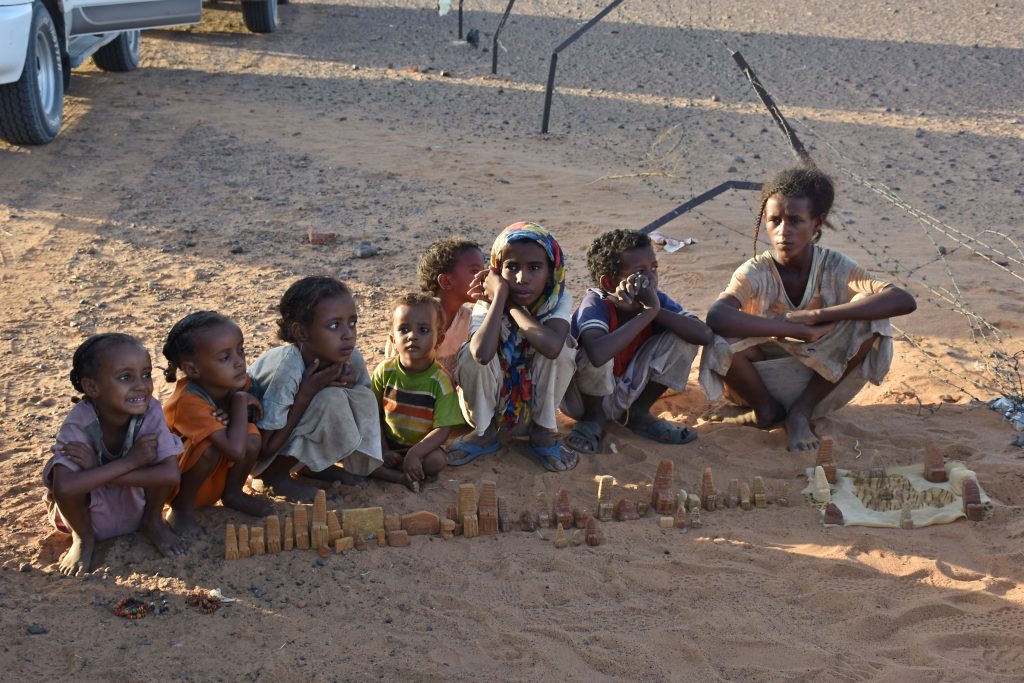
Globally, Sudan has the largest rate of malnourished children: “The national prevalence rate of global acute malnutrition (GAM) is 13.6 per cent and places Sudan above the WHO threshold in seven out of eighteen states.” (UNICEF Sudan, 2021, “Malnutrition”) In particular — “three million children under-five suffer from malnutrition, of which more than half a million from severe acute malnutrition.” (UNICEF Sudan, 2021, “Malnutrition”) Furthermore, good nutrition must be supplemented by exclusive breastfeeding, of which only 62.3% of all babies in Sudan are exclusively breastfed.
The effects of malnutrition on children’s development are enormous. In particular, COVID-19 exacerbated the issues within Sudan’s health system, triggering a shortage in available medical care, and increasing malnutrition in children. UNICEF, among other organizations, has worked in Sudan to provide food, care, and micronutrient supplementation in regions where needed (such as in Kassala state). They are planning to continue this work into 2021 in the hopes of increasing the community management of acute malnutrition.
Nationally, there are hopes to improve this situation, as outlined by UNICEF: in 2020, the new transitional government signed a peace agreement in order to end the economic crisis, which presented opportunities “to work on sustaining peace, capacity-strengthening and community empowerment.” (UNICEF Sudan, 2021, “Malnutrition”)
Beyond malnutrition, but working to reduce this primarily, the Prime Minister for the Transitional Government of Sudan Abdalla Hamdok seeks to focus on “opportunities to strengthen the capacities of service providers, systems and communities.” (UNICEF Sudan, 2021, “Malnutrition”) These measures will prove crucial for the betterment of the future of Sudan, as its population is majorly young. (UNICEF Sudan, 2021, “Malnutrition”)
Right to identity
In Sudan, there is a legal obligation to register the birth of a child. Yet despite this law, many of Sudan’s children remain absent from the population data. Numbers drastically improved from the early 2000s to 2010: the birth registration rate was 33% in 2006, and 59.3% in 2010. Despite improvements, in 2014, the rate was estimated at 67.3%, which is still a low figure. These rates are also significantly higher in urban areas rather than rural ones. The reasons behind the low birth registration dates are many. Overall, the number of registration centers is low, and the quality of these institutions is poor. Furthermore, the fees and the distance from the centers are often an obstacle for families in Sudan. (Cuninghame et al. 2016)
Risk factors —> Country-specific challenges
Child trafficking
In 2020, the United States government reported that Sudan did not adequately meet the requirements for combating child trafficking, although efforts are made by the Sudanese government. (Office to Monitor and Combat Trafficking in Persons, 2020) Indeed, the country’s history of violent conflict easily puts children at risk of military involvement, killings, injuries, and sexual violations. (UNICEF, 2020 “Child Protection”)
In this context, in 2019, the Sudanese Armed Forces in particular upheld a plan to lead child protection efforts in areas of conflict, training its army on child soldiering and child trafficking. Nonetheless, these measures were not effective, as the Rapid Support Forces reportedly used child soldiers in May 2019 and officials did not investigate this incident. Furthermore, the US government has pointed to Sudan’s conflation of the definitions of trafficking, smuggling, and kidnapping, which hinders Sudan’s efforts to eliminate child trafficking. (Office to Monitor and Combat Trafficking in Persons, 2020)
Child labor
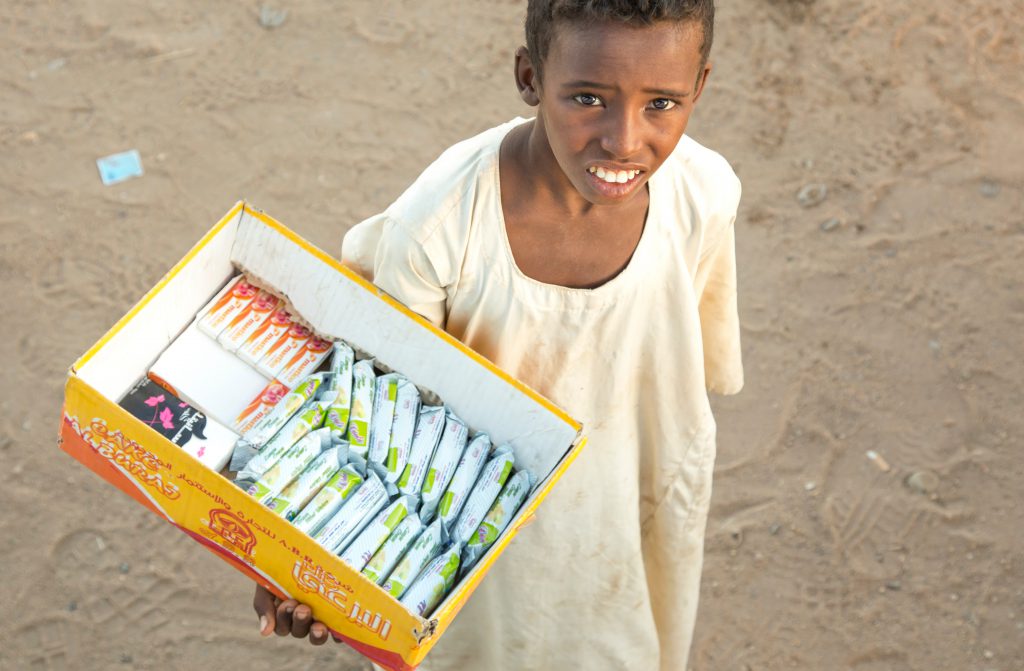
Child labor is a prevalent form of child abuse in Sudan. According to the 2019 State of the World’s Children Report (SOWC), 18% of children in Sudan are subject to child labor. These living conditions impact children’s access to education (child labor often results from school dropouts), and exposes them to further economic vulnerabilities. Mining is a particularly dangerous industry, prevalent in the Kordofan region.
Children also complete work with cattle and the gum arabic production. Child labor also affects the environment of the child, of which only 82% of minors live in a family environment, and 3.5% living without family. Children are often abandoned if they are born out of wedlock due to cultural practices within the country. (UNICEF Sudan, 2021, “Child Protection”)
Discrimination of LGBTQ children
In 2020, Sudan repealed the death penalty for homosexuality. (Lavers, 2020) Although consensual same-sex relations remain criminalized, this proved to be an important step for the rights of gay people in the country. Indeed, Noor Sultan, the executive director of the Bedayaa Organization, an LGBTQ advocacy group that works in Sudan and Egypt, spoke with the Washington Blade, and stated that the repeal of the death penalty “is a great step toward change and reflect the willingness of the government, the law is still there and the jail sentence is still there, but we are optimistic.” (Lavers, 2020)
One particular LGBTQI+ organization (founded by women activists), Freedom Sudan, seeks to reach out to youth groups and students in the hopes to spread information about sexual health. (El-Abubkr, 2015) The lawyer in charge of the organization, however, has received multiple death threats and is often at risk of violence. (El-Abubkr, 2015)
Indeed, organizational efforts to support LGBTQI+ rights in Sudan are often unsuccessful. (El-Abubkr, 2015) Among the successful, youth group Rainbow Sudan has managed to use the Internet in order to defend LGBTQI+ rights, which is particularly crucial as the Sudanese government has aimed to repress online information about sex and sexual rights. (El-Abubkr, 2015)
In 2011, Sudan even established a unit (“Cyber Jihad Unit”) to investigate the activities of youth groups online, resulting in the blockages of websites. (El-Abubkr, 2015) Access to information, including details about sexual health and LGBTQI+, is crucial for a child. Gay youth must feel they have a comfortable space to express their sexuality; unfortunately, this is not yet the case in Sudan.
Child marriage
Although child marriage is a violation of fundamental human rights, it is highly prevalent in Sudan. Child marriage in Sudan and elsewhere affects underaged girls disproportionally. More than marriage, it often leads to early pregnancy and social isolation, triggering an inability to pursue educational and vocational training opportunities.
Furthermore, child marriage can lead to poor health, child abuse, and the perpetuating of the poverty cycle. In Sudan, 26.6 per cent of girls aged 20-24 years were first married or in union before 15 years of age, and 60.2 per cent of girls aged 20-24 years were first married or in union before 18 years of age. In order to stop this harmful practice, UNICEF calls on “political commitment, resilient and visionary leadership, and technical support to civil society organizations and groups working to address cultural and behavioural change.” (UNICEF Sudan, 2021, “Child Marriage in Sudan”)
Also, efforts to help girls out will require educational and vocational opportunities. Currently, the Minister of Labour and Social Development has approved of the National Strategy and Action Plan for Ending Child Marriage (2020-2030), which offers an “operational framework for national coordination and mobilisation in the legal, political and development spheres and provided clear guidance on services provision that expedite national efforts towards zero tolerance regarding child marriage.” (UNICEF Sudan, 2021, “Child Marriage in Sudan”)
Female genital mutilation
Although Sudan has been praised for its efforts to abandon the practice of female genital mutilation (FGM) in Africa, 27.2% of its girls under 14 have undergone FGM, and 68.8% of these figures are girls at age 14. This practice is most prevalent in the east of the country. In July 2020, a law to criminalize FGM was endorsed.
Nevertheless, the need for a strengthened commitment to reduce the rate of FGM to zero remains. These efforts will require community initiatives from ministries, community leaders, journalists, media influencers, NGOs, UN agencies. In particular, UNICEF points to “mothers who care for their daughters” to help resolve this issue. (UNICEF Sudan, 2021, “Female Genital Mutilation”)
Environmental challenges
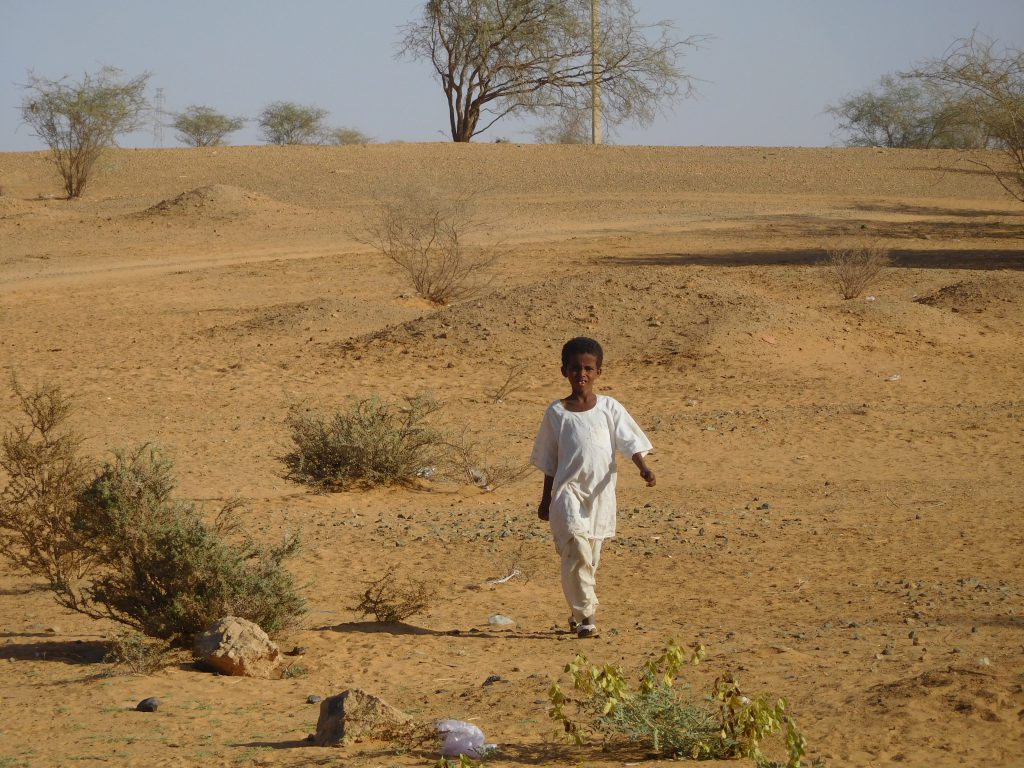
Particularly affected by global warming, Sudan suffers from flooding, drought, and desertification, conditions which prove significantly distressful for communities that rely on pastoralism and agriculture. Overall, Sudan’s air temperatures have increased by one degree Celsius since 1970. There is also little water available, deeply affecting children’s biological development, physical growth, and mental needs: “Children need a safe and clean environment to survive, grow and thrive.” (UNICEF Sudan, 2021, “Environment”)
Written by Leah Benque
Last updated on 6 May 2021
References:
Frah, Ehab. (2015). “Reasons for low birth registration in Sudan.” Journal of African Studies and Development. 7. 64-71.
Sikainga, Ahmad Alawad (last updated 2021, March 10), “Sudan,” Britannica Geography & Travel.
The World Bank — Sudan (2019).
UNICEF Sudan, (March 2021) “Nutrition — Annual Report 2020,” UNICEF.
UNICEF Sudan, (March 2021) “Health — Annual Report 2020,” UNICEF.
UNICEF Sudan, (March 2021) “Gender — Annual Report 2020,” UNICEF.
UNICEF Sudan, (March 2021) “Environment — Annual Report 2020,” UNICEF.
UNICEF Sudan, (March 2021) “COVID-19 Response — Annual Report 2020,” UNICEF.
UNICEF Sudan, (March 2021) “Child Protection — Annual Report 2020,” UNICEF.
UNICEF Sudan, (March 2021) “Water, Sanitation and Hygiene (WASH) — Annual Report 2020,” UNICEF.
[1] This article by no means purports to give a full or representative account of children’s rights in Sudan; indeed, one of many challenges is the scant updated information on Sudanese children, much of which is unreliable, not representative, outdated or simply non-existent.

